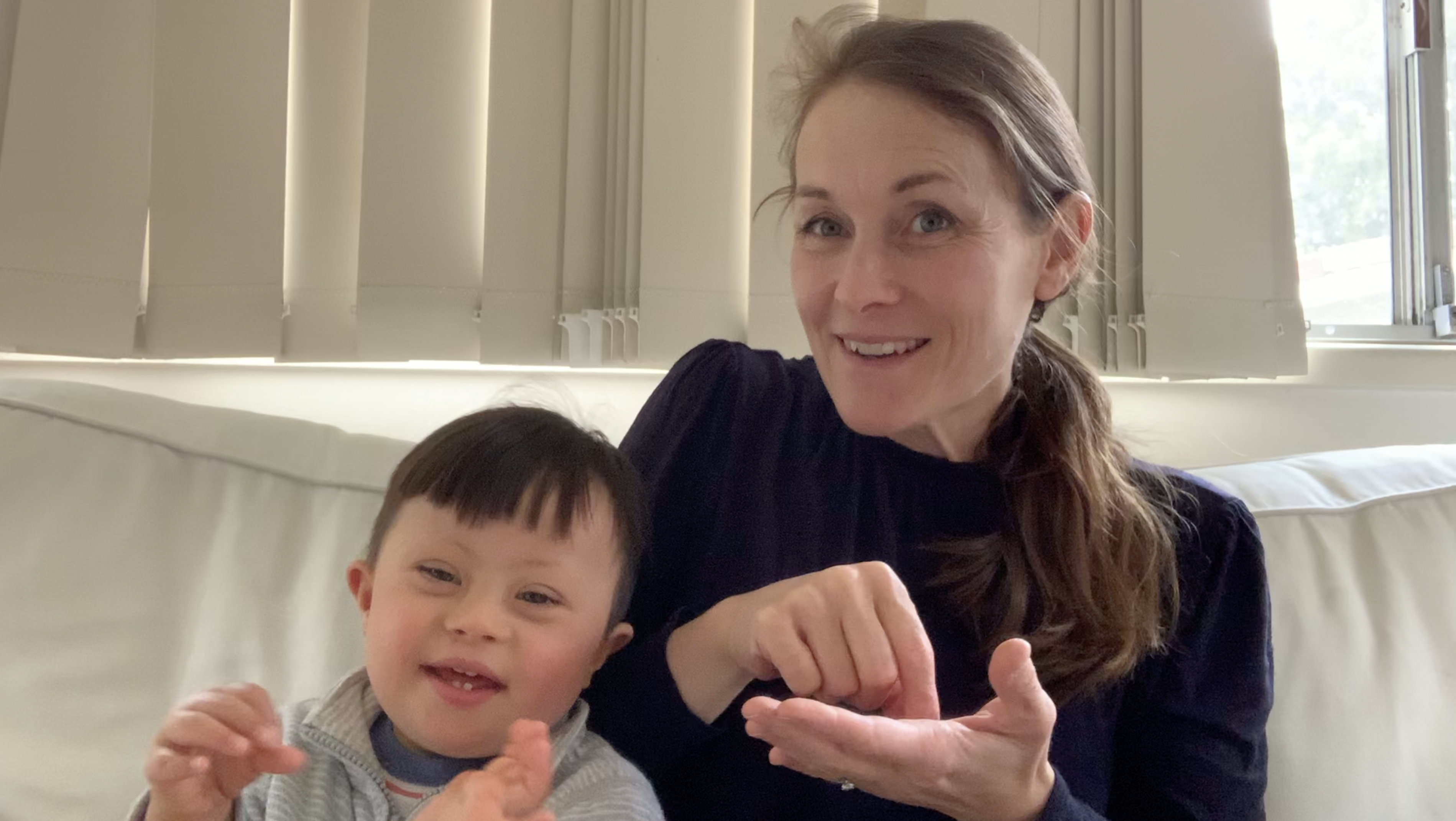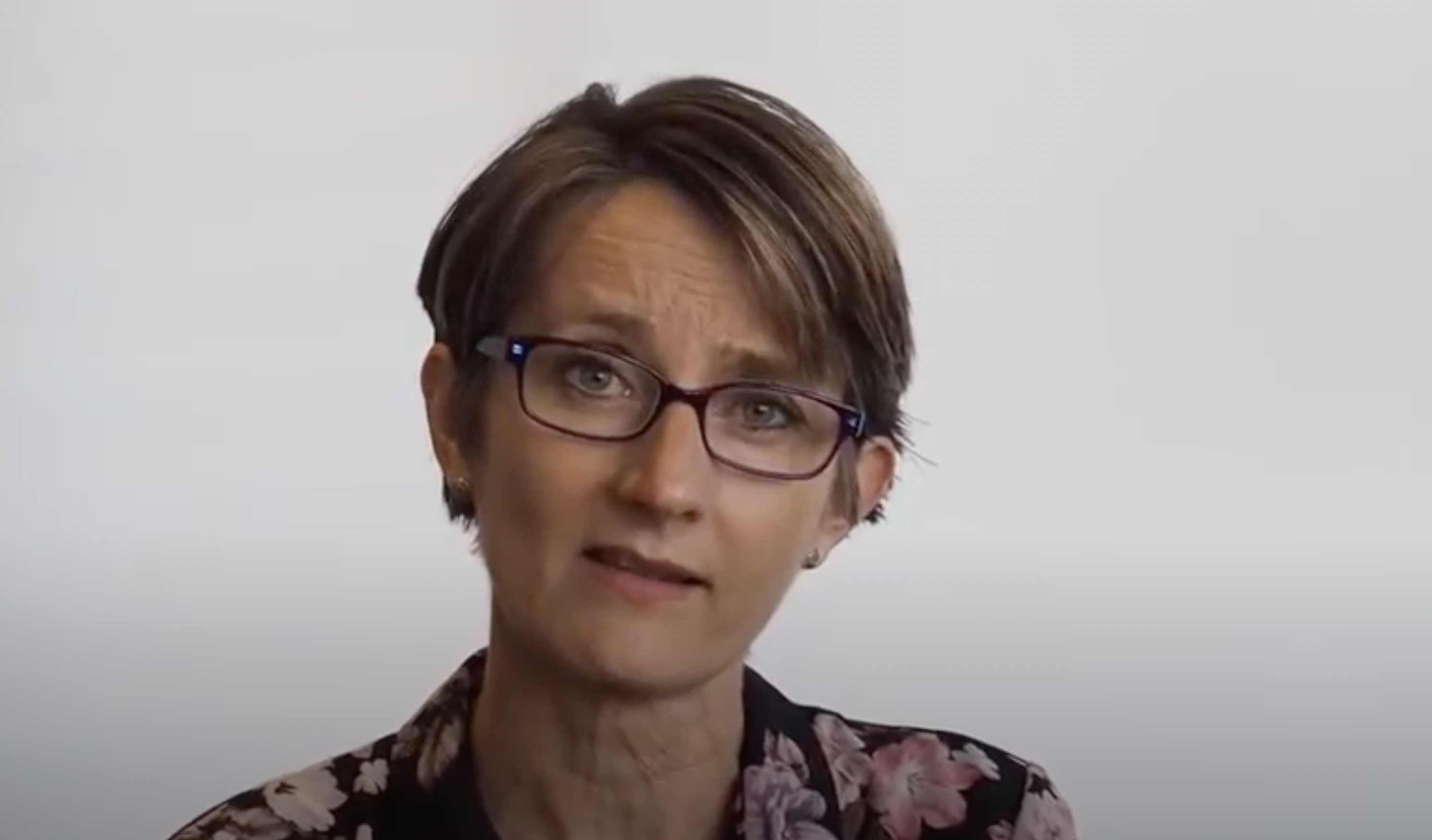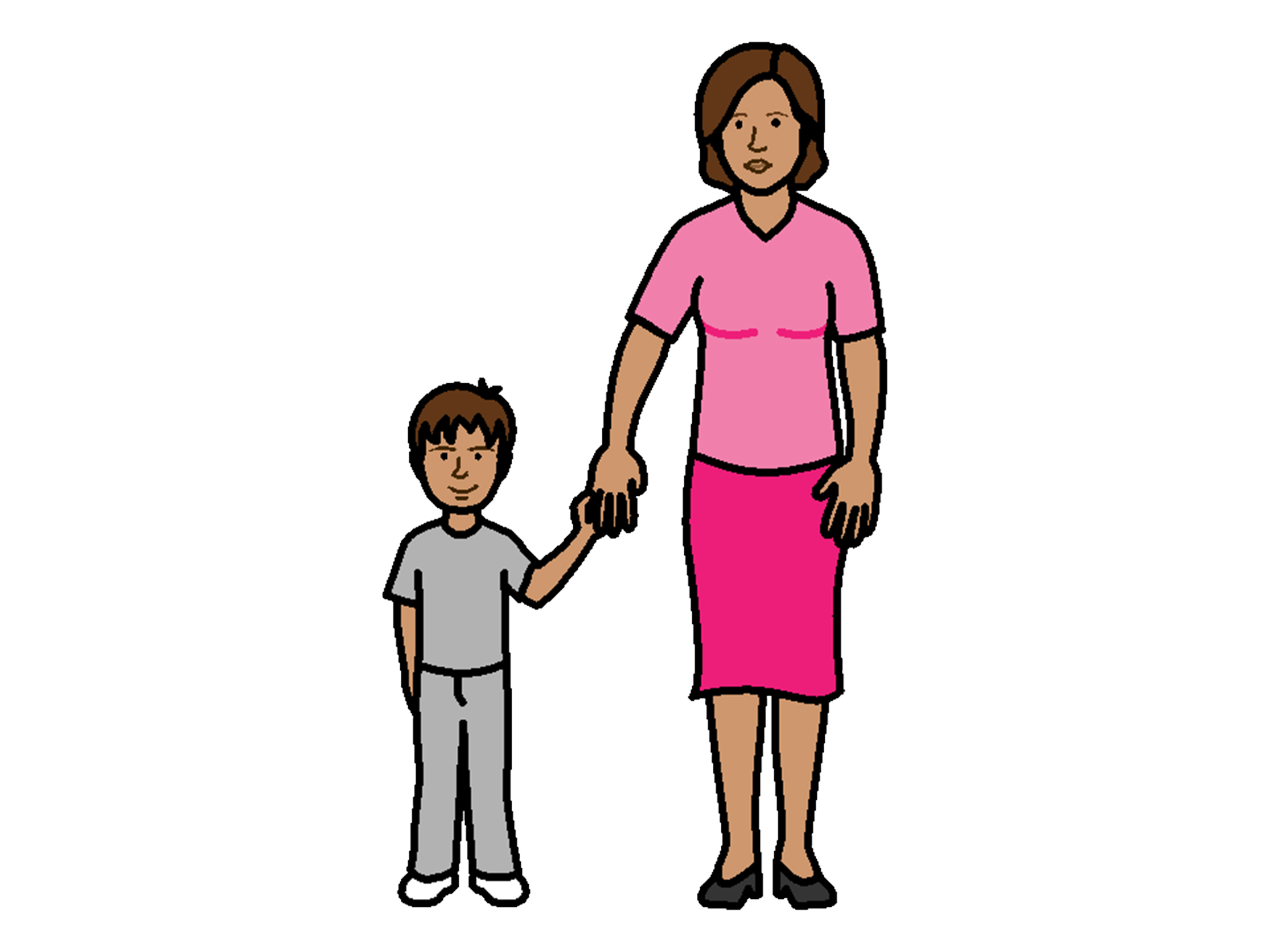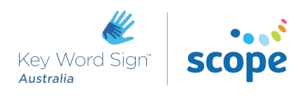
No! Speech is the most effective and efficient way of communicating with others. We are all surrounded by people speaking. Research evidence as well as experience has shown that no matter what type of alternative strategy we use with someone, they will continue to develop speech if that is possible for them.
We also know from research that using KWS or other forms of Augmentative and Alternative Communication (AAC) enable a child or adult with communication difficulties to communicate more effectively with others. Being a more effective communicator means that people feel more positive about communicating, are more willing to engage in communication interactions, are better able to participate in everyday activities, and will feel more confident and less frustrated.
Using Key Word Sign is a natural extension of using gestures. Signs are often very similar to the gestures we use every day when we talk. However, your child may look a little different because s/he is using more gestures than other people would normally.
It is possible that people may look at a person combining speech and signs, but often this is because they are interested or impressed. So yes, using signs may make the person stand out a little – but in a good way!
You don’t need to be an expert in using signs or know a lot of signs before you can start. You are already using a form of signing now with your use of natural gesture. Start with a few signs, use them consistently and keep adding to the signs you know.
Start with signs to help you talk about things that are important for the person you are using the signs with. Think about their interests, what they want to communicate about and what activities they normally participate in – that will give you a good idea of the signs that would be helpful when you are starting.
Then it’s important to keep going and keep adding to your sign vocabulary as you need to.
One of the best things you can do is learn to sign with them!
Sadly, many adults with communication disabilities who have learned to use KWS at school go on to be supported by workers who don’t know or understand signs. Because the people in their environment don’t understand or aren’t using Key Word Sign, the person with communication difficulties gives up on using use the signs they know.
If you sign when you are talking with these people, they will start to use more and more sign with you. As you learn to understand more of what they are trying to say, you may be surprised by how much they can and want to communicate!
AAC is the term used to describe a wide range of tools or strategies that can support people who have difficulties understanding or using speech.
We all use different modes of communication every day – for example, when you use facial expressions or gestures instead of talking or write a note and pass it to a friend or coworker, or send a text or an email.
People with difficulty understanding or expressing themselves using speech may use these same modes but also benefit from additional supports to help them be more successful in sending and receiving messages. Some may use AAC all the time. Others may say some words but use AAC for longer sentences or with people they don’t know well. AAC can help in school, at work, and when talking with friends and family.
Key Word Sign is known as ‘unaided AAC’. Other AAC strategies are picture or text based communication books or boards, or “high-tech” tools such as an app or computer program that will speak when a message is created with text or pictures. These are known as ‘aided AAC’.
No. Using Key Word Sign is just one of the ways children and adults who have communication difficulties can be supported to communicate more effectively.
Key Word Sign may not meet all the communication needs of all people across their daily environment and routines. To meet these different communication needs, the child or adult may need to use a combination of strategies, such as using pictures, photos or objects. Key Word Sign and gesture can be used in combination with these other approaches to contribute to people with communication difficulties being able to understand and express themselves successfully.
It is sometimes difficult to keep motivated to use signing when the child or adult you are trying to communicate with is not responding or learning to use the signs. Don’t give up!
For some people it takes months of being exposed to the signs before they can be expected to start to use them. Just as young children are exposed to more than a year of people talking with them and around them before they start to say words, people with communication difficulties may need the same amount of time (or more!) of seeing signs used before they will start using signs themselves.
No, each country has its own sign language!
In America they use signs from American Sign Language (ASL), in England they use British Sign Language (BSL) and of course, in Australia we use signs from Australian Sign Language (Auslan).
Key Word Sign is used in many different countries, and the signs used are always from the host country’s Deaf sign language. There are sometimes similarities between signs from different countries, but also large differences.
If you look up examples of signs on YouTube, it’s important to check which country the signs are from, or you may find that you have learned signs that are not useful here.
There are a number of ways you can look up and learn more signs.
When you do a Basic Key Word Sign Workshop, you will be given the book “Getting Started with Key Word Sign” (Auslan edition) which contains a starter set of signs. If you haven’t yet attended a workshop, you can purchase copies from the online shop – but we really recommend that you do the Basic workshop as soon as you can.
Have a look in the Resources section of this website to find video and printable sign resources. Most of them are available at a reasonable cost, in bundles for a discount and you will find some free resources too!
For an even wider library of signs, you can go to Auslan Signbank and look up the signs for any word.
There are also other Australian based Key Word Sign resources which you can purchase from our online shop.
We will soon be launching our new Sign Library, which will contain over 900 vocabulary items. These will be listed as line drawings of the sign, as well as symbols (PCS, as in the Boardmaker program). We will also have videos for most of those signs, to support your learning. The ‘KWSCreate’ function will include a range of templates and formatting features that you can use to produce resources to meet your particular needs. This will be available via a subscription service.
You can also look at the Resources section on this site for some ready-made handouts.
Have a look at our Events page for a listing of upcoming workshops offered by KWSA and accredited KWS Presenters across the country.
Click on your state in our “Find a presenter” map on the home page. Some states have a committee that organises workshops and responds to training requests. You will also see accredited KWS Presenters across the country. Contact any of them to request a workshop for your family, home, school, kinder, crèche, work or day service.
If none of that works, contact us: keywordsignaustralia@scopeaust.org.au and we’ll do our best to help.
Yes! The use of Key Word Sign for adults and children with communication difficulties is what is called ‘evidence-based’. This means that research has shown that Key Word Sign is effective.
Understandably, the NDIS wants the supports they fund to work. Being evidence-based means that Key Word Sign resources and training can be funded through your NDIS plan.
The NDIS aims to fund services and resources that support the functional ability of people with disabilities. Key Word Sign improves the ability of the person with disability to communicate – and communication is one of the core functional domains listed by the NDIS.
When implemented correctly, Key Word Sign uses person centred, strengths focused and capacity building approaches – all criteria which the NDIS looks for when making decisions about whether interventions should be supported.
There are many, many kinds of supports which people with disabilities may request that are funded through the NDIS. Not all NDIS Planners know about Key Word Sign. Providing information about Key Word Sign can help a Planner to make their decision about whether Key Word Sign is an appropriate support.
There is more information about using NDIS funding for Key Word Sign available here.
Stories





